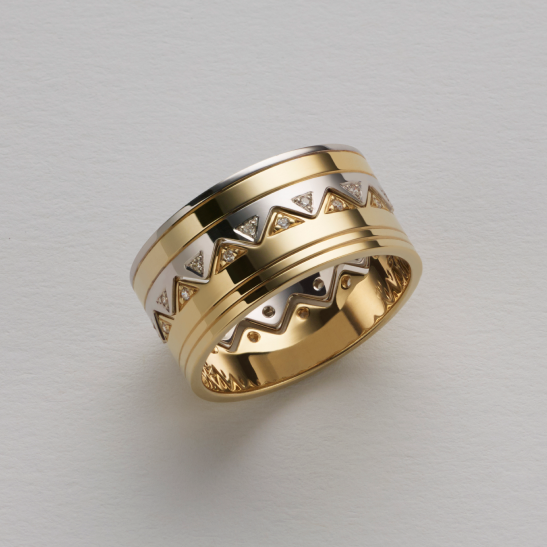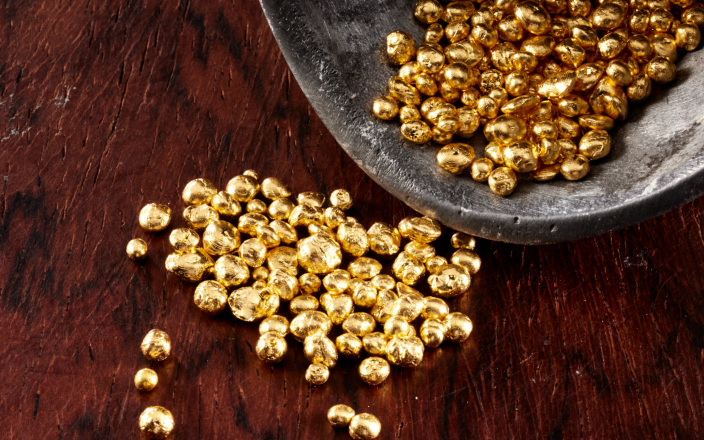Throughout history, precious metals have maintained profound significance, captivating humanity through the ages. From adorning ancient rulers in ceremonial splendour to embellishing revered temples with intricate artefacts, these metals have become integral to human culture. While traditional precious metals still dominate today’s markets, more consumers are turning to alternative options due to affordability, sustainability, and unique aesthetic appeal. Furthermore, the industry is witnessing the rise of mixed metals both precious and non, highlighted through unique designs for men and women.
Here is a glimpse into the enduring value of precious metals throughout history, where their scarcity and intrinsic properties have consistently made them prized assets of wealth and power.
The Classics
The demand for precious metals in the jewellery industry has witnessed significant shifts, both locally and globally, driven by factors including economic conditions, cultural preferences and changing consumer tastes. The classic precious metals, however, remain the strong players in the market, with gold still shining as the hero preference from the consumer. The classics, gold, platinum, palladium and silver hold their strong record of demand for many reasons. Desire and historic significance will play a role in the everlasting popularity of these metals along with the education and workability of these metals on the bench. With thousands of years contributing to the learnings of how these precious metals behave in certain conditions, they remain the comfortable metals to work with and promote.
Over the years, the industry has seen the introduction of multiple other metals, often as an alternative to the classics or to be used in conjunction with, signifying a shift in taste, potential, or other factors. With fluctuations in the cost of living and changing economic certainty, consumers do look for alternatives, whether that be through more lightweight versions of their favourite classic metals, or alternative metals and materials.
Another significant factor affecting buying patterns is the ethical sourcing of specific metal types. As consumers become more savvy about where their stones and metals reside from, there may be even more demand placed on alternate metals or recycled metals that have little impact on the environment.
 Supplied by Worth & Douglas
Supplied by Worth & Douglas
 Supplied by Worth & Douglas
Supplied by Worth & Douglas
Tungsten
Shiny and metallic in appearance, tungsten is weighty, providing a luxurious feel for jewellery, and is another of the alternative metals chosen due to its durability and ability to be finished both with a high polish and with different finishes.
Tantalum
Conflict-free and sustainable, tantalum brings with it exceptional durability and is corrosion-resistant. Its grey-blue hue and hypoallergenic properties have made it an interesting choice for the consumer and on the bench a durable option with high resistance to heat. With the ability to be stretched due to its malleability, rather than resized, it presents its challenges, however, does have a strength that appeals to a specific consumer wanting a lighter-weight piece.
Titanium
Another of the T metals, Titanium has had a slightly lengthier relationship to the jewellery industry, and boasts similar characteristics to tantalum, being lightweight and extremely durable. The benefit of titanium being hypoallergenic may be more important to the consumer than the ability of the metal to be resized.
Brass, Copper and Stainless Steel
For jewellery design, accent metals and feature, these metals are becoming more sought after. brass and copper hold warm and golden hues, reminiscent of antique treasures, and with ease of workability, the metals allow the maker to be playful with their designs. Stainless steel often seen in ranges designed for men, remains a strong option, resistant to tarnishing, and rust and is exceptionally durable with companies like Cudworth continuing to carry strong ranges of stainless steel men’s jewellery.
Zirconium
An increasingly favoured alternative among consumers for its striking appearance, durability, and versatility is black zirconium. This alternative metal is a naturally silver-grey metal. However, when it undergoes a specialised surface treatment process called heat oxidation, it transforms into a deep black colour. This process results in a durable, scratch-resistant coating that enhances the metal’s aesthetic appeal and longevity.
According to Chris, black zirconium on its own allows for bold and edgy designs while also providing a striking contrast when crafted with more conventional choices like yellow or rose gold. “The demand for such options has evolved as couples increasingly seek personalised rings that reflect their own unique style,” he says.

The Rise of Alternative Metals
Today’s market sees a growing interest in alternative metals such as tungsten, zirconium and titanium due to their affordability, diverse styles, and innovative properties. This shift reflects consumer’s desire for personal expression and accessibility in jewellery design.
According to the director of Worth and Douglas, Chris Worth says “alternative metals stand out with features such as superior durability, lightweight elegance, and hypoallergenic properties, “setting them apart from the more conventional choices.”
“The distinct characteristics of these alternative metals not only provide a contemporary appeal but also address the tastes and needs of today’s couples in ways that traditional metals may not,” he says.
Director of Shreeji Jewelry, Nimesh Champaneri, also agrees, saying that “there has been growing interest in alternative metals such as titanium, tungsten and stainless steel, particularly in men’s jewellery”.
 Supplied by Starium
Supplied by Starium
 Supplied by Starium
Supplied by Starium
A Glimpse Into the Future
With a growing focus on sustainability, consumers are driving a shift in the jewellery industry towards recycled alternatives like e-waste metals, responding to concerns about the environmental consequences of gold mining. By embracing these eco-friendly materials, jewellers not only meet the demand for more socially responsible products but also contribute to reducing harmful extraction practices, aligning with the values of environmentally conscious consumers.
Furthermore, innovative patented metal alloys like Starium are entering the market, offering a unique blend of precious white metals and meteorites. Starium presents a more cost-effective alternative to metals like platinum. Alongside its use of palladium, its surprising addition of meteorite is found rather than mined.
While metals like gold maintain intrinsic value in jewellery, the selection of metals used in jewellery design is continuously shifting, contingent upon a myriad of factors, including supply-demand dynamics, prevailing fashion trends, and considerations about environmental sustainability and ethical sourcing. For businesses in the jewellery industry, staying attuned to these trends and understanding consumer preferences is essential for maintaining relevance and meeting the evolving market needs. By remaining responsive to shifting demands and aligning with ethical and environmental values, businesses can position themselves for success in this dynamic industry.


